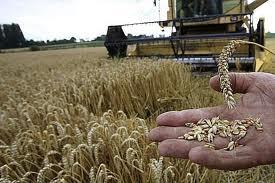US Genetically Engineered Agriculture is Outclassed by Europe’s Non-GM Approach

The argument that the UK and the EU need GMO technology to increase production and improve its agriculture is flawed according to a new report. GM farming in the US is falling behind the UK and EU’s non-GM methods.
University of Canterbury (UC) researchers have found that the GM strategy used in North American staple crop production is limiting yields and increasing pesticide use compared to non-GM farming in Western Europe.
The team led by Professor Jack Heinemann analysed data on agricultural productivity in North America and Western Europe over the last 50 years.
Western Europe and North America are highly similar in types of crops grown, latitude, mechanisation and farmer education.
The findings have been published in the peer-reviewed International Journal of Agricultural Sustainability.
Non-GM leads the field
“We found that the combination of non-GM seed and management practices used by Western Europe is increasing corn yields faster than the use of the GM-led package chosen by the US,” said Prof. Heinemann.
The research showed rapeseed (canola) yields increasing faster in Europe without GM than in the GM-led package chosen by Canada; and is decreasing chemical herbicide and achieving even larger declines in insecticide use without sacrificing yield gains, all this whilst chemical herbicide use in the US has increased with GM seed.
Heinemann added that “Europe has learned to grow more food per hectare and use fewer chemicals in the process. The American choices in biotechnology are causing it to fall behind Europe in productivity and sustainability.”
GM hinders choice and progress
The report points out that; agriculture responds to commercial and legislative incentive systems which take the form of subsidies, intellectual property rights instruments, tax incentives, trade promotions and regulation.
It concludes that these incentive systems in North America are leading to a reliance on GM seeds and management practices that are inferior to those being adopted under the incentive systems in Europe.
This is also affecting non GM crops
US yield in non-GM wheat is falling further behind Europe, “demonstrating that American choices in biotechnology penalise both GM and non-GM crop types relative to Europe” according to Prof Heinemann.
“The decrease in annual variation in yield suggests that Europe has a superior combination of seed and crop management technology and is better suited to withstand weather variations. This is important because annual variations cause price speculations that can drive hundreds of millions of people into food poverty.”
Away from GM, towards diversity, resilience and productivity
Some frightening statistics are covered in the report, not just about GM, but of the general move toward depleted genetic diversity and the consequently potential catastrophic risk to staple food crops.
For example, according to FAO figures; ‘China, of the nearly 10,000 wheat varieties in use in 1949, only 1,000 remained in the 1970s . . . In the United States, 95 per cent of the cabbage, 91 per cent of the field maize, 94 per cent of the pea, and 81 per cent of the tomato varieties cultivated in the last century have been lost’.
GM and the control of seeds through patents, restricting farmer choice and preventing seed saving have exacerbated this problem.
Professor Heinemann, who was a lead author of the International Assessment of Agriculture Knowledge Science and Technology (IAASTD), concludes:
“We need more than agriculture; we need agricultures – a diversity of practices for growing and making food that GM does not support; we need systems that are useful, not just profit-making biotechnologies – we need systems that provide a resilient supply to feed the world well.”
Resources:
Jack A. Heinemann , Melanie Massaro , Dorien S. Coray , Sarah Zanon Agapito-Tenfen & Jiajun Dale Wen (2013): Sustainability and innovation in staple crop production in the US Midwest, International Journal of Agricultural Sustainability, DOI:10.1080/14735903.2013.806408
http://dx.doi.org/10.1080/14735903.2013.806408

